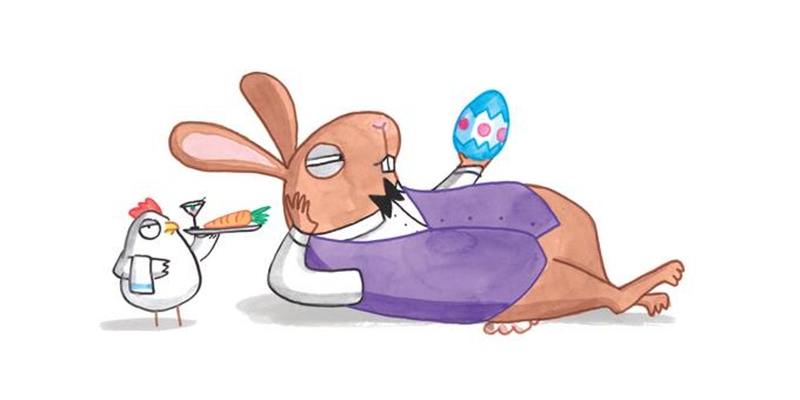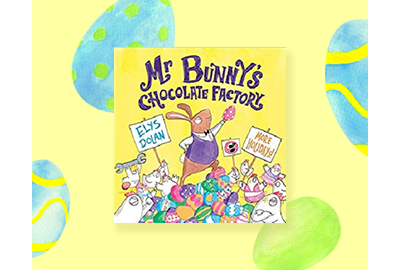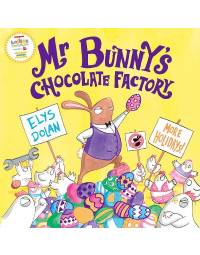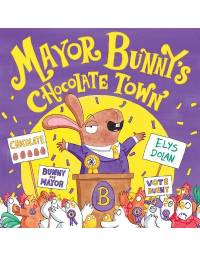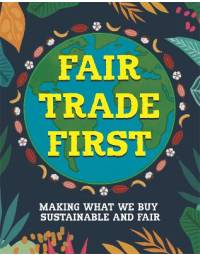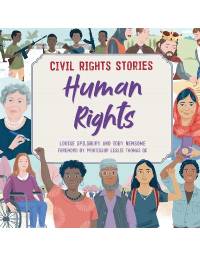Mr Bunny owns a chocolate factory where chickens lay eggs so that he can sell Easter Eggs. However, his greed gets the better of him and he loses more than he can believe. Mr Bunny learns a real lesson as all is back to normal at his factory.
With eye catching illustrations and a relatable message behind the tale no matter what age, 'Mr Bunny's Chocolate Factory' can be used as a teaching tool from EYFS to KS2.
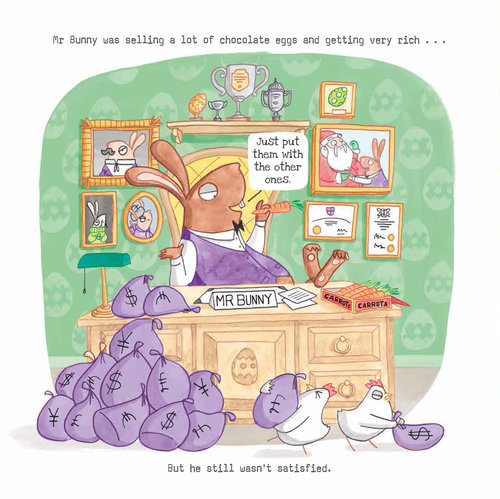

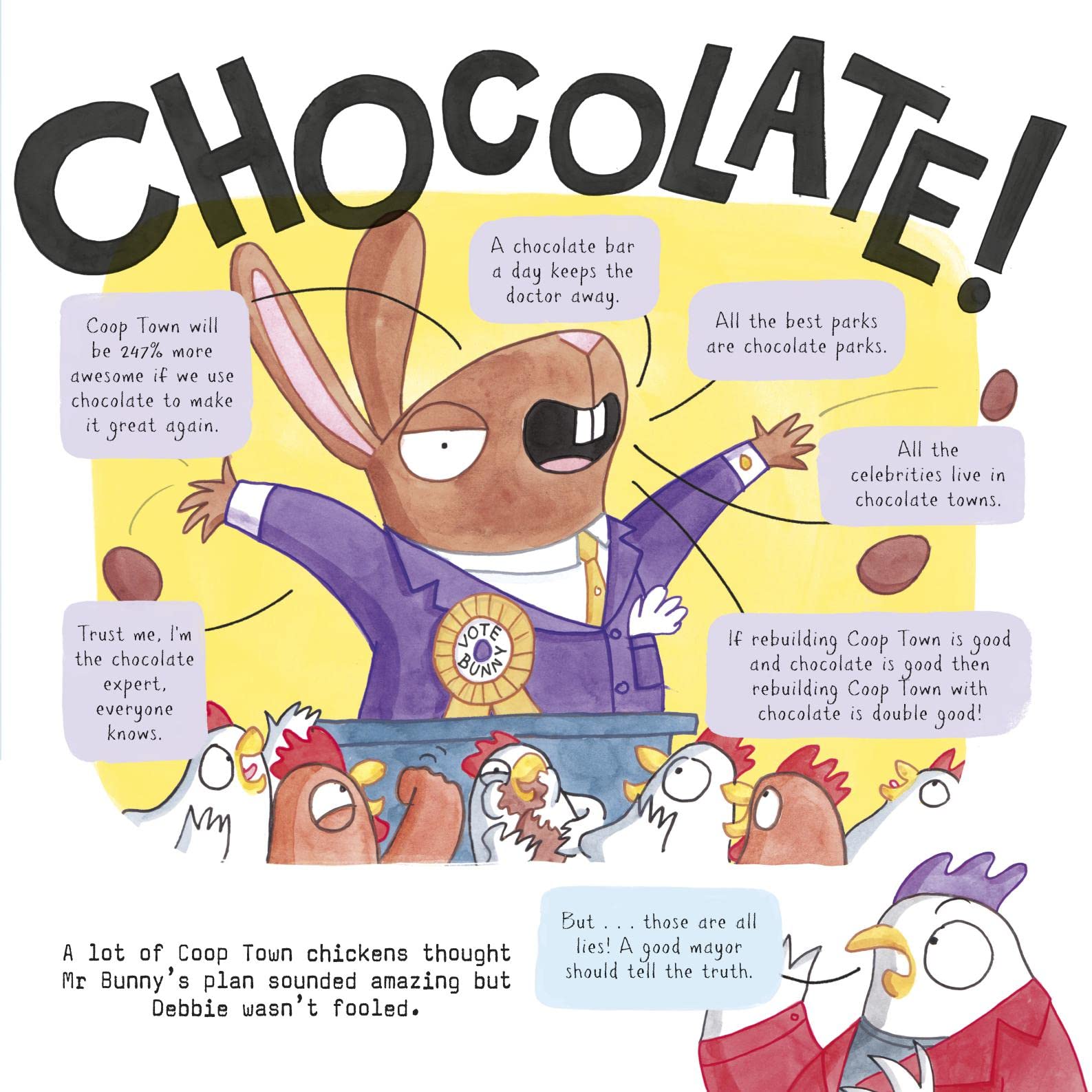

Drawings of Mr Bunny in his office and making announcements to his worker chickens from the picture book 'Mr Bunny's Chocolate Factory.'
Audience and Purpose
The teacher assessment frameworks for writing place an emphasis on children writing for a range of purposes and audience.
KS1:
- Write simple, coherent narratives about personal experiences and those of others (real or fictional).
- Write about real events, recording these simply and clearly write simple, coherent narratives about personal experiences and those of others (real or fictional).
KS2:
- Write effectively for a range of purposes and audiences, selecting language that shows good awareness of the reader (e.g. the use of the first person in a diary; direct address in instructions and persuasive writing).
How to make it accessible
EYFS:
- Do children have a visual prompt of their audience? For example of they are writing a ‘Get Well’ card to Teddy, is Teddy on the writing table with a bandage on his arm?
- At EYFS, writing tasks work best if children can relate to the experience (concrete rather than abstract).
- Teachers should use the language ‘Who’ are we writing to and ‘Why’ are we writing rather than purpose and audience.
KS1:
- KS1 children will benefit from role play; hot-seating; using props and oral rehearsal.
- They may also need ‘Who’ and ‘Why’ before the terms ‘audience and purpose’ are introduced.
KS2:
- Features of specific genre should be taught first and form the main body of success criteria (grammar objectives should be secondary).
- Make ‘audience and purpose’ explicit.
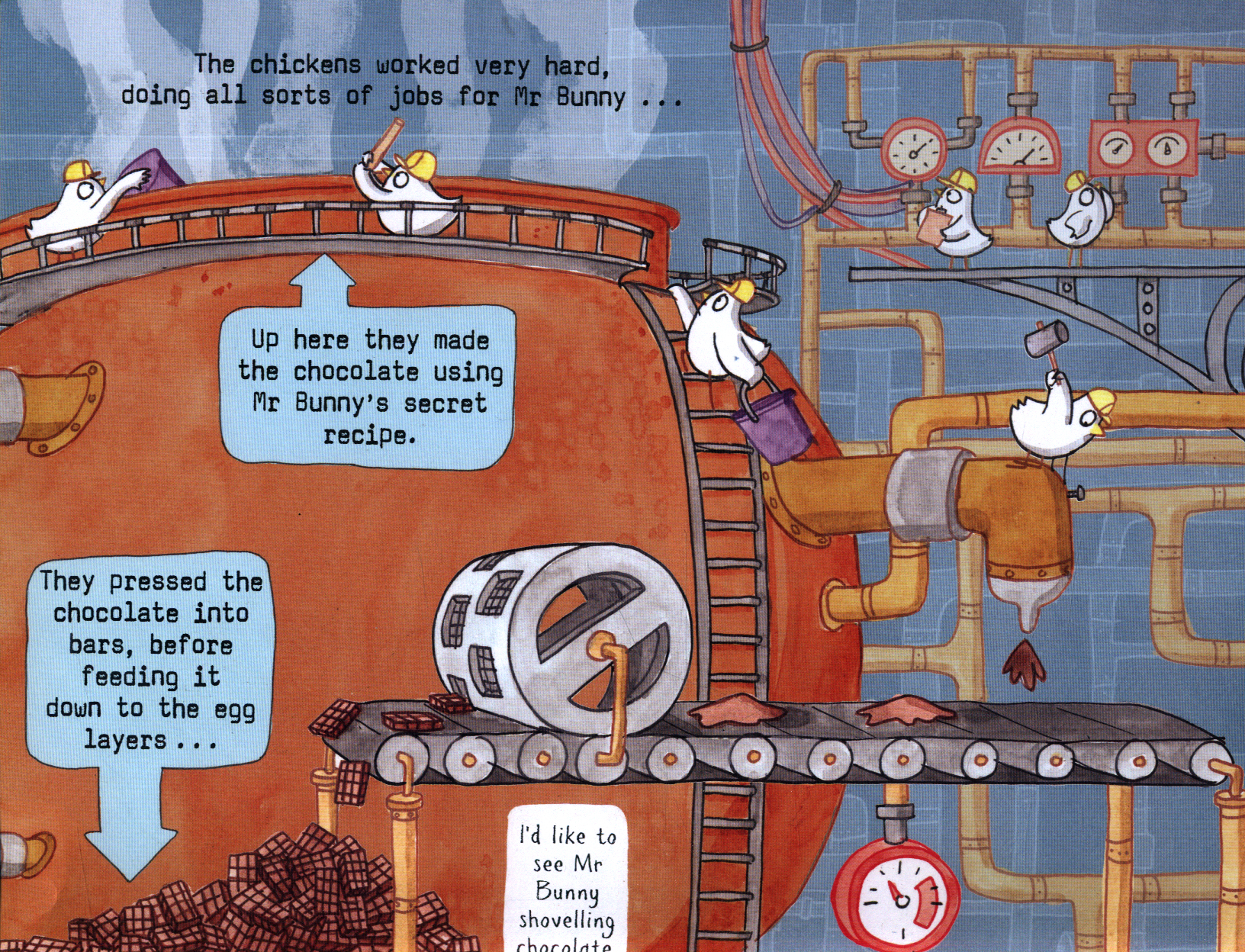

EYFS Writing Opportunities
- Speech bubbles from the chickens to Mr Bunny asking for a break.
- Speech bubbles from Mr Bunny to the chickens telling them to work harder.
- Teachers could use Chatterbox too – children take photos of the picture in the book and record what the character might say.
- Placards: children could look at the placards in the text and make their own mini signs with complaints from the chickens.
- Instructions: design and write how to make the perfect Easter Egg.
- Lists: What’s in the Easter Egg? Children could write a list of what could be inside the egg.
KS1 Writing Opportunities
- Character descriptions: writing a description of Mr Bunny
- New character: create a new chicken for the book –what might they say?
- Speech: writing a speech from Mr Bunny to the chickens or the other way around.
- Diary: recount events from the perspective of Mr Bunny or the chickens.
- Letter: Mr Bunny’s letter of apology to the chickens.
- Adverts: design an Easter Egg and record an advert to sell it.
- Postcard: from the chicken who went to the Maldives – where will your chicken write from?
- Explanation: use the pictures/ text on page three and four to explain how to make the perfect egg.
KS2 Writing Opportunities
Any KS1 writing activities plus:
- Sequel: what happens next to Mr Bunny – does he go down a King Midas greed route?
- Non-chronological report: imagine Mr Bunny gets a visit from the ‘Health and Safety Department,’ what will the report say?
- Interview: who will you interview and what newspaper/ magazine will the interview be in. This will influence your choice of vocabulary to support the correct level of formality.
- Balanced argument: who’s side are you on - the boss or the workers?
- Job advert/application: Mr Bunny has advertised a job – write the advert. Write in role to apply for the job.
Teachers may also like to relate this book to additional learning topics:
- The story of chocolate
- Chocolate and fairtrade
- Human rights
- Child labour
- Different leaders and their strategies
'Mr Bunny's Chocolate Factory' is available to purchase for your classroom on the Madeleine Lindley website or in the Book Centre. If you are a teacher or work at a school and would be interested in this type of book, find out more about our school library supply service.
